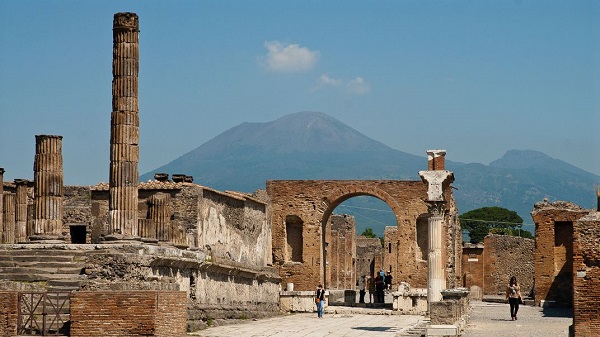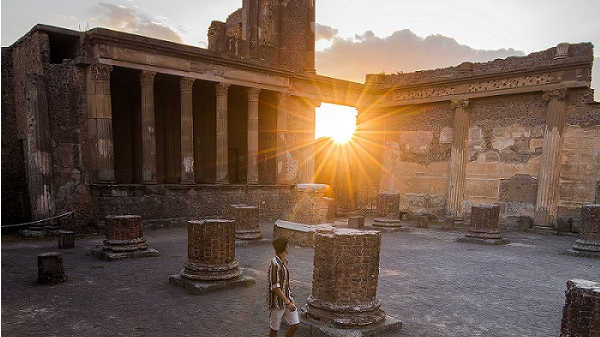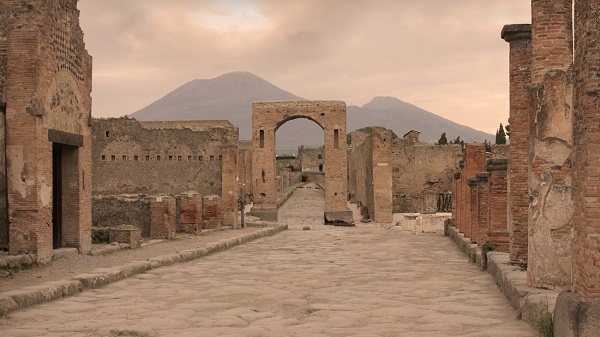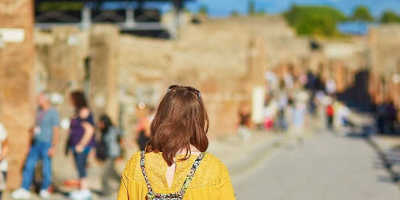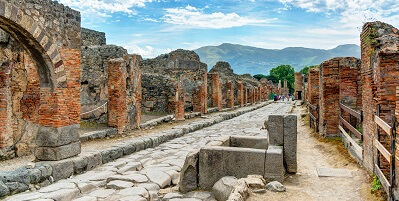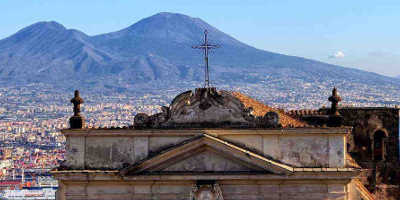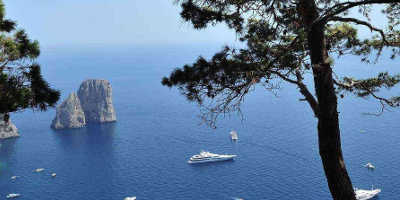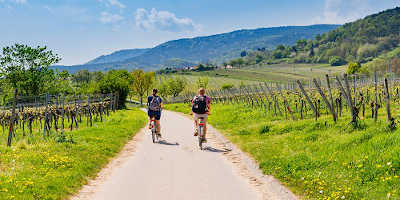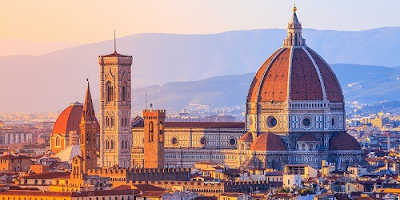How to avoid the foot traffic of Pompeii?
Some 2.5 million tourists visit Pompeii each year, making it one of Italy’s most popular attractions. This much traffic is not only damaging the ruins, slowly decaying what’s left of the city, but it’s also making it hard for people to actually appreciate what’s there in front of them.
The archaeological site of Pompeii is one of the most visited locations in Italy. The vast city is famous throughout the world, known for its catastrophic destruction by the nearby volcano Mount Vesuvius. Though a devastating event, this great city is not know for its eruption as much, but for its preservation of an ancient time. It offers a snapshot into the past, where we can look back on ancient Rome with fresh eyes. Naturally, such a site has received worldwide recognition, becoming a popular tourist attraction since the 18th and 19th centuries. But as it gets so busy, studying the ruins of Pompeii can actually be quite a frustrating job, with hundreds of visitors creating massive foot traffic and queues. If you’re passionate about experiencing Pompeii properly, digging deep into the ruins and their historical significance, you might be interested in visiting this archaeological site when tourists are fewer. Read our insider advice for a quieter Pompeii visit.
The Best Season to visit Pompeii
Undoubtedly, the busiest time to visit is during the high season. High season in Italy usually lasts from May through to August. For many Europeans this is during their summer holidays, so many families and couples flock to different areas of Europe to enjoy the sun, sea and cities during the summer months. At this time the weather is very hot and humid, especially in towns and cities who do not benefit from a coastal breeze. With an influx of tourists comes a rise in prices, from flights to accommodation. Tours and transport are no exception, so if you are travelling during this time, it’s definitely worth booking anything and everything in advance! In other words, you need to be super organised if you want to reduce waiting times and avoid disappointment for main attractions. Although you do get better weather during this time, the stampede of tourists all trying to get a glimpse at Pompeii’s ruins can make this an exasperatingly sweaty and stressful venture. Instead, we recommend travelling in either the shoulder season or, even better, the off-season. Shoulder season includes May-early June and September-October. The weather is slightly cooler, but you can still enjoy days of sun and colour, as these periods cover the season of Spring and Autumn, both very beautiful times of year. Prices are a little cheaper and there aren’t as many tourists. For true history or architect fanatics who wants to wander the ancient streets undisturbed, there is no better time than November-March. This is officially the off-season, and although a drop in temperatures means colder days and more layers, it also means a drop in everything else, including prices and people!
The Best Time to Visit Pompeii
Friday, Saturday, and Sunday are by far the most popular days to visit, with even some Europeans stopping in for a visit on the weekend. Visiting in the middle of the week will guarantee you fewer crowds, with even some deals for better prices on the quietest days. On most days, the crowds don’t start arriving until later in the morning, due to the 2 to 3-hour journeys from the largest cities. Visitors hope on buses or trains and head down to Pompeii for a day of discovery, meaning that the foot traffic is quiet at the opening time. Giving you a good hour to walk around freely before the lines start forming. If the morning doesn’t work for you, try arriving from 1pm onwards, which is usually when tourists start to pack up and go home. If the peak period is the only time you can manage, avoid the entrance traffic by going through the Piazza Anfiteatro’s entrance, which is the quieter gate. Be prepared to spend around 3 hours there, as the site is vast and without a guide can be quite hard to navigate around. Although, don’t expect to be much quicker if you’re with a guide, as they will spend more time at certain points of interests. This is something to consider if you’re travelling with little ones, elderly citizens or mobility-impaired people, it could be a long day for them. To see more advice in regards to the latter, then please read our Top Tips for Visiting Pompeii which discusses developments made to the site to make it accessible for all.
Before you go
A few points to note before you go, include what to wear, what to bring and what tourist scams to look out for. First of all, be aware that the city is quaint, with narrow alleys, cobblestones and uneven ground make it more difficult to walk on. With this in mind, leave your flip flops at home and wear something comfortable and durables that can survive the uneven terrain for a few hours without making your feet hurt too. If you’re going during high season or even shoulder season, bring a sun hat and sunscreen. With little to no shade, you’ll be exposed to the sun for hours. Be sensible and protect yourself from the sun’s rays with a hat to shield your eyes, face and head, and apply sunscreen regularly. Where there’s large numbers of tourists, unfortunately, there are scammers nearby too. Anyone who’s loitering near the entrance of the site and is charging you for a service is most likely ripping you off. Trust the people who are in proper uniform, either staff who work at the site or guides representing tour companies and just be aware.
Related article: What are the most recent finds in Pompeii?

